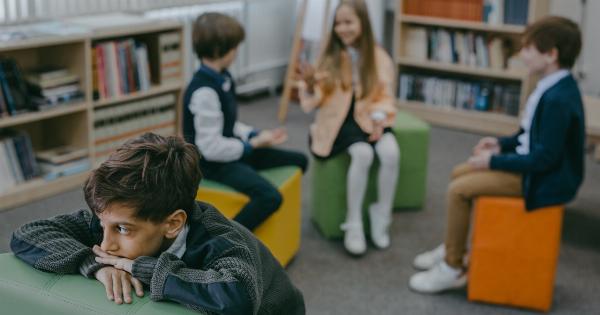Bullying is a major social issue that affects millions of children all around the world. As a result, many children suffer in silence because of the torment they face every day from their peers.
However, it is important to stand up against bullying, as one child can make a difference and create a safer environment for themselves and their peers.
The Start of the Bullying
The bullying began in grade 6 for 12-year-old Emily, a quiet and reserved student who loved to read and write. Emily was always known for her kind-hearted spirit, and her intelligence often made her stand out in class.
However, her classmates did not always appreciate her unique qualities.
As school started, Emily noticed that some of her classmates would laugh and whisper whenever she walked by. It was not long before Emily realized that she was the target of bullying.
The bullying started small, with insults and name-calling, but it quickly escalated into physical violence.
Reluctance to Speak Up
At first, Emily was hesitant to speak up about the bullying. She feared that if she spoke up, the bullying would only get worse. Her grades began to suffer as she became more and more anxious about going to school.
Her parents noticed that something was wrong and tried to get her to talk about it, but she refused.
It wasn’t until Emily’s parents received a phone call from her teacher that they found out how serious the bullying was. Emily’s teacher noticed that she was becoming withdrawn and was not participating in class like she used to.
The teacher suggested that they have a meeting with the school principal to address the issue.
Taking Action
Together with her parents, Emily met with the school principal and her teacher to discuss the bullying. The school administration took immediate action, and the bullies were appropriately disciplined.
The school also implemented anti-bullying programs to raise awareness and prevent further bullying incidents from happening.
After the meeting, Emily began to feel more confident in herself. She started standing up for herself and others who were being bullied. She also found support among her peers, who had previously been scared to speak out against bullying.
Emily became a role model for others and helped create a safer environment for everyone in her school.
The Power of One Child
Emily’s story shows the power of one child to make a difference in their school and community. It only takes one person to stand up against bullying and create change.
By speaking out and taking action, children can make their schools and communities safer and more inclusive for everyone.
The impact of bullying can be devastating, leading to depression, anxiety, and low self-esteem. It is important for parents, teachers, and students to recognize the signs of bullying and take action to prevent it from happening.
How Parents Can Help
Parents can play a critical role in preventing bullying and supporting their children who are being bullied. Here are some tips for how parents can help:.
- Listen to your child and take their concerns seriously.
- Assure your child that it is not their fault and that they are not alone.
- Contact your child’s teacher or school administration to report the bullying.
- Work with the school to implement anti-bullying programs and policies.
- Teach your child to stand up for themselves and others who are being bullied.
- Encourage your child to participate in activities that build confidence and self-esteem.
How Students Can Help
Students also have a critical role to play in preventing bullying and supporting their peers who are being bullied. Here are some tips for how students can help:.
- Speak out against bullying and refuse to participate in it.
- Report any bullying incidents to a teacher or school administration.
- Support and encourage peers who are being bullied.
- Stand up for yourself and others who are being bullied.
- Participate in anti-bullying programs and events.
Conclusion
Standing up against bullying is not an easy thing to do, but it is a necessary thing to do. Bullying affects everyone, and we all have a responsibility to prevent it from happening.
By working together, parents, teachers, and students can create safer and more inclusive environments for everyone.






























